Toyota RAV4 Vs Hyundai Tucson: Which Compact Crossover is Right for You?

Take a look down the nearest street. Chances are, you’ll spot at least one Toyota RAV4.
For a few years now, Toyota’s bread-and-butter crossover has been the undisputed sales champ not just of the segment, but of all passenger vehicles outside pickups. It is the cute ute everyone is aiming for.
Get a Quote on a New Toyota RAV4 or Hyundai TucsonThat includes Hyundai, which gave its Tucson crossover a dramatic overhaul for 2022. Bigger and better-equipped than before, the Tucson also offers available hybrid and plug-in hybrid versions. Yes, just like the RAV4. It’s clear Hyundai has Toyota in its sights, but which one is better suited to your needs? Let’s dive in and find out.
Cabin Space
RAV4: The RAV4 rides on a 105.9-inch (2,690 mm) wheelbase, and is shorter bumper-to-bumper than the Tucson. Given those figures, it shouldn’t be a surprise that the Toyota comes up behind on the space race. Front seat legroom is 40.9 inches (1,040 mm), while rear occupants will find 37.8 inches (960 mm) of the stuff. Headroom can be as much as 40.0 inches (1,015 mm)—for the second row, without a moonroof. Spec the glass and back-seat head space shrinks to 39.4 inches (1,002 mm). That’s still more than the front row enjoys, though. Keep the RAV4 a tin-top and you’ve got 39.0 inches (992 mm) up front; the moonroof cuts that to 37.7 inches (957 mm).
The Toyota claws back some space when measuring across the cabin. Shoulder room is 57.8 and 56.4 inches (1,469 and 1,432 mm), front and back. Meanwhile, hip room is 54.3 and 47.7 inches (1,380 and 1,210 mm), respectively.
Choosing either of the hybrid options does nothing to the RAV4’s available passenger space. Progress!
Tucson: The Tucson has gone from one of the most compact crossovers to one of the largest … compact crossovers. Leg room is nearly equal in both rows, measuring 41.4 inches (1,052 mm) up front and 41.3 inches (1,050 mm) in the back. Thank the long 108.5-inch (2,755-mm) wheelbase. With a regular tin roof, head room in the two rows is 40.1 inches (1,019 mm) and 39.4 inches (1,002 mm), respectively. Spec the panoramic sunroof and those numbers drop to 38.1 and 39.0 inches (968 and 990 mm).
SEE ALSO: 2022 Hyundai Tucson Hybrid Review: Stylin’ On YouShoulder room is 57.6 inches (1,464 mm) in front, and 56.0 inches (1,422 mm) in the back. Meanwhile, hip room is 54.5 and 53.9 inches (1,385 mm and 1,369 mm), respectively.
Hybrid models shave a small 0.3 inches (7 mm) off the rear-seat head room, thanks to under-seat battery storage.
Bottom Line: These two are fairly close on most measurements, but drivers and passengers alike will appreciate the added leg room in the Tucson.
Cargo Space and Towing
RAV4: The RAV4 will swallow up to 37.6 cubic feet (1,064 L) of luggage with the rear bunch in its upright position. Drop those seats, though, and you’ll find 69.8 cu-ft (1,976 L) of space.
Toyota quotes a 1,500-pound (680-kg) towing limit for the gas-powered RAV4. The hybrid model bumps that up slightly, to 1,750 lb (794 kg), and the Prime tops out at 2,500 lb (1,134 kg).
Tucson: The Hyundai just slightly out-points the Toyota in seats-up storage, with a quoted 38.7 cubic feet (1,096 L) of space. That number more than doubles to 80.3 cubes (2,274 L) when running the Tucson in two-seater form. Hybrid models see slightly less seats-down space, at 74.5 cubic feet (2,110 L).
All Tucsons can tow up to 2,000 lb (907 kg) when properly equipped..
SEE ALSO: 2020 Kia Telluride vs 2019 Subaru Ascent: Three-Row ThrowdownBottom Line: Any way you slice it, the Tucson comes out ahead. It’ll hold more, and it’ll pull more.
Technology and Features
RAV4: The RAV4 lineup starts with a 7.0-inch touchscreen running Toyota’s venerable Entune system. A slightly larger 8.0-inch screen is optional on the XLE, and becomes standard equipment on the Adventure (Trail in Canada), TRD, and Limited trims.
Other standard goodies across the range include LED headlights, heated side mirrors, and blind-spot indicators. Automatic climate control is part of the list too; single-zone in America, and dual-zone in Canada. Top trims bump that up to tri-zone goodness.
A 7.0-inch information screen shows up in the instrument panel of higher trims, including the hybrid-only XSE. Only the driver’s seat is power-adjustable, regardless of trim (except the Prime). Native navigation and an 11-speaker JBL sound system are both standard on the Limited, and optional on lower trims. A 360-degree camera is optional only on the Limited.
The pricier Prime has its own set of unique features. Opting for the plug-in is the only way to access a larger 9.0-inch touchscreen, a head-up display, and a power-adjustable passenger seat.
Tucson: The Tucson’s standard touchscreen is 8.0 inches. A larger 10.25-inch unit is available, but it gives up one of the smaller screen’s perks: wireless Android Auto and Apple CarPlay.
Other standard features include HD Radio, keyless entry, two USB slots, and stain- and odor-resistant cloth seating. The mid-level SEL adds another pair of USB outlets in the second row, LED exterior lighting, and a power-adjustable, heated driver’s seat. Options include a hands-free power liftgate, wireless charger, fully digital instrument cluster, and dual-zone auto climate control.
The top Limited trim adds the huge afore-mentioned glass roof, a power-adjustable front passenger seat, heated rear seats, a 360-degree camera, Hyundai’s parking assist feature, and more.
SEE ALSO: 2020 Ford Escape Hybrid Review: Friendly Fuel-SipperBottom Line: The Tucson takes an early lead when comparing base models. Both it and the RAV4 are close in the more common mid-level trims though. The gap widens again at the top end, where the Tucson boasts more useful and convenient tech. It’s also important to note that Canadians can only access the higher Tucson trims with the hybrid drivetrain.
Powertrains
RAV4: Every RAV4 has some version of Toyota’s 2.5-liter four-cylinder engine under the hood. Gas models use only that, producing 203 horsepower and 189 lb-ft of torque. The four-pot is joined up to the corporate eight-speed automatic transmission. Buyers have a choice of either front- or all-wheel drive for most trims: the Adventure/Trail and TRD are AWD-only.
Hybrid models run the more efficient Atkinson-cycle version of the gas engine, hooked up to two electric motors (one at each axle). Toyota quotes 219 horsepower, but no torque figure, due to the very different power curves of the two propulsion systems. Hybrid RAV4s are AWD only.
Finally, there’s the RAV4 Prime, a plug-in hybrid model. It uses a more powerful battery and electric motor setup, producing 302 hp. That makes it the second-fastest production Toyota out there (after the mighty GR Supra), but more importantly, allows for a 42-mile (68-km) electric-only range.
Tucson: The Tucson lineup also kicks off with a 2.5-liter naturally aspirated four cylinder. The Hyundai motor is slightly down on power compared to the RAV4, producing 187 horsepower and 178 lb-ft of torque. It hooks up to an eight-speed auto too, and comes in both FWD and AWD flavors. So far, so similar.
Switch over to the hybrid version, however, and the Tucson drops nearly a liter of displacement under its contoured hood. The family 1.6-liter turbo-four is there, working in tandem with an electric motor to produce a combined 227 hp and 258 lb-ft of torque. The motor draws from a 1.49-kW lithium-ion battery under the rear seats. Hyundai has bucked the hybrid trend by fitting the Tucson with a six-speed auto instead of a CVT. It’s still AWD-only, however.
There is also a plug-in version of the hybrid, which uses a stronger electric motor for 261 hp, and a larger battery as well (13.8 kWh).
SEE ALSO: 2020 Ford Escape Hybrid vs 2020 Toyota RAV4 HybridBottom Line: Things are very close if you opt for the pure-ICE versions of either of these cute-utes. The Toyota has the edge on paper, while the Hyundai has the same advantage when talking hybrid power. Switch to plug-ins and it’s the RAV4 again with the bragging rights.
Fuel Economy
RAV4: Toyota quotes quite a few different mpg ratings for the RAV4, depending on trim and drivetrain. The most fuel-efficient gas-only models post 28 mpg city and 35 mpg highway, for a combined 30 mpg. Higher trims shave 1 mpg from the city rating, but maintain the even 30 mpg overall. So does the AWD LE model, even with its 27 and 34 mpg ratings for city and highway, respectively. Other AWD models all score between 25–27 mpg in the city, and 32–33 mpg on the highway.
The RAV4 Hybrid keeps things simpler: every trim posts the same 40 mpg combined rating, split between 41 mpg city and 38 mpg highway. The RAV4 Prime is slightly less efficient in gas-only mode, averaging 38 mpg. Add in its ability to run EV-only for longer stints, and it posts a 94 mpg-equivalent rating.
Tucson: The Hyundai may have less power, but that should translate to better efficiency, right? Not the case. Front-drive Tucsons score 26 mpg city and 33 mpg highway, combining for a 29 mpg score. AWD models take a big hit on the highway too, dropping the respective figures to 24, 29, and 26 mpg.
The hybrid model gets closer to its Toyota contemporary. Opt for the base Blue trim and the Tucson is a 38-mpg model, on all counts. Go for the higher trims and the numbers translate to 37 mpg city, 36 mpg highway, and 37 mpg combined.
Plug-in hybrid EPA figures were unavailable at the time of writing. We know it will run 28 miles on nothing but electrons, however—slightly less than the RAV4.
Bottom Line: This is a clear win for the Toyota. In every possible match-up, it saves more fuel than the Tucson. That means more money for little Billy’s (or Beth’s) hockey equipment.
SEE ALSO: Toyota RAV4 vs Honda CR-V: Which Crossover Is Right For You?Safety
RAV4: Toyota’s Safety Sense 2.0 package is standard on every 2021 RAV4. The lineup includes pre-collision warning (with pedestrian detection), radar-guided cruise control, lane departure alert with steering assist, and more. Blind-spot monitoring with rear cross-traffic alert is optional on the base trim and standard on the XLE up. The top trim includes a 360-degree camera.
The IIHS awarded the current RAV4 its Top Safety Pick designation. The NHTSA gave it a 5-star rating overall, with a four-star front driver side rating being the only deviation.
Tucson: Neither the IIHS nor NHTSA have scored the latest Tucson at the time of writing. The previous model scored the same overall ratings as the RAV4 did however, and we expect the 2022 to at least match those results.
Standard driver and safety assists include automated emergency braking, automatic on/off LED headlights, lane keep and follow assists, and high beam assist. The SEL trim adds blind spot monitoring, rear cross-traffic alert, safe exit assist, and adaptive cruise control. Limited trims add a 360-degree camera, rear parking sensors, blind-spot view monitor, rain-sensing wipers, and Highway Driving Assist.
Bottom Line: Both of these vehicles pack in a lot of key safety tech even in base form. In that sense, they’re tied. The Tucson inches ahead when comparing top trims, thanks to its clever blind-spot view monitor and Highway Driving Assist.
Styling
RAV4: Toyota flipped the script with the latest RAV4, giving the little family hauler butch looks more in line with the brand’s truck range. Squared-off wheel wells and angular headlights give the RAV4 just a hint of toughness. Trim choice plays a key role in how this little rig looks, too: the raised ride height and bigger grille of the TRD model is more off-road-friendly, while the sportier XSE trim sticks to bigger wheels and (optional) blacked-out roof for more street cred.
Tucson: The 2022 Tucson is basically unrecognizable compared to previous models. It’s an altogether busier look than the RAV4, with a concept car-like front end and angular taillights. The hidden lighting elements within the grille are very cool, and we’re also fans of the thin fillet of metal along the D-pillar. At least the wheel arches are similar on both trucklets, right?
Bottom Line: Something something subjectivity. The RAV4 is the segment best-seller, so it’s safe to say people like how it looks—or at least don’t dislike it, which is subtly different. The Tucson’s dramatic design would by default stand out more.
Pricing
RAV4: Popping the door open on the RAV4 costs at least $27,470, including destination, for a front-drive LE model. Inside you’ll find cloth upholstery and the smaller 7.0-inch touchscreen with Apple CarPlay and Android Auto functionality. Outside there are standard LED headlights. Moving up the ladder nets the XLE and XLE Premium trims, starting from $28,720 and $31,425, respectively. These get the sought-after features such as dual-zone auto climate control, available heated seats, heated leather steering wheel, additional USB ports, and the option to upgrade to the larger infotainment screen. The highest trim available as either gas-only or hybrid is the $35,955 Limited. Upgrading to AWD adds $1,400 to the price tag; opting for hybrid power is a further $1,150, as it’s AWD-only.
From there the lineup diverges: the XSE trim is hybrid-only, starting from $35,925. On the gas-only branch is the Adventure/Trail ($34,530) and the TRD Off-Road ($37,155) at the top of the pile.
The plug-in Prime comes in two flavors: the “base” SE ($39,425) and the sportier XSE ($42,750). Load up the latter with every bell and whistle and the RAV4 will nearly touch $50,000.
Tucson: The Tucson family begins with the front-drive SE trim in front-drive form, at $26,135. Next up the ladder is the value-packed SEL, which comes with a sticker of $27,685. It offers two option packages: the $2,600 Convenience Package, and the $1,700 Premium Package, which requires the former. At the top of the lineup is the $35,885 Tucson Limited.
Adding AWD to any 2.5-liter Tucson bumps the price up by $1,400. There are two hybrid models: the $32,835 SEL Convenience and $38,535 Limited. For reference, that’s only $750 and $1,250 more than their respective AWD gas counterparts, respectively.
Like the RAV4, there are unique trims for each drivetrain. On the gas side, the sporty N-Line lands in the middle of the walk, priced from $31,785. The Hybrid Blue is the most affordable battery-assisted model, starting at $30,235.
Plug-in hybrid trims are not available yet.
Bottom Line: The Tucson undercuts the RAV4 across the board; you can essentially add AWD onto the base car for the price of a front-drive RAV4, or move up to the mid-level SEL trim. The gap narrows at the top of the range, not because the Tucson is poor value, but because it packs more content in.
In Conclusion
Considering the only vehicles out-selling the RAV4 are pickups, Toyota has obviously found the sweet spot with its compact crossover. We can’t deny that. The RAV4 offer something for everyone, from a reasonably affordable base model through to fuel-sipping hybrid options and hardier TRD models.
We rate the new Tucson very highly, however. It does nearly everything the RAV4 does, but better. Its fuel economy isn’t great, and its plug-in is unlikely to match the Toyota’s range or performance. Beyond that though, the Tucson is a well-equipped package at an excellent price.
Become an AutoGuide insider. Get the latest from the automotive world first by subscribing to our newsletter here.

Kyle began his automotive obsession before he even started school, courtesy of a remote control Porsche and various LEGO sets. He later studied advertising and graphic design at Humber College, which led him to writing about cars (both real and digital). He is now a proud member of the Automobile Journalists Association of Canada (AJAC), where he was the Journalist of the Year runner-up for 2021.
More by Kyle Patrick



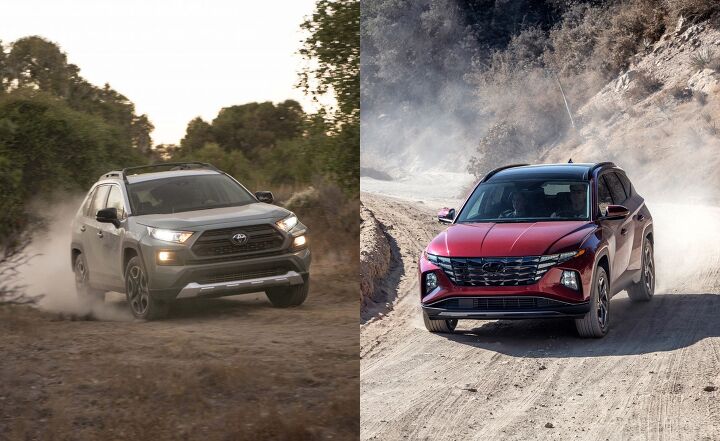
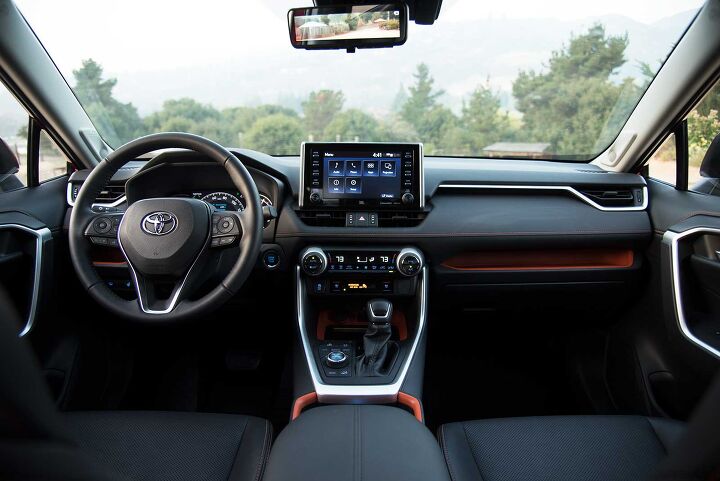
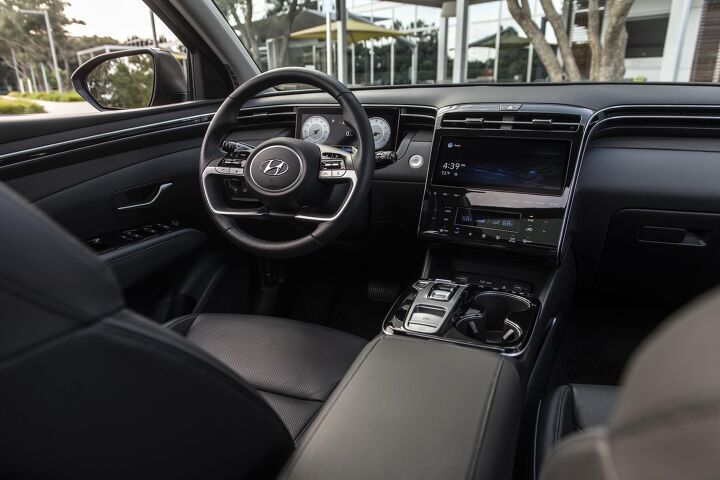


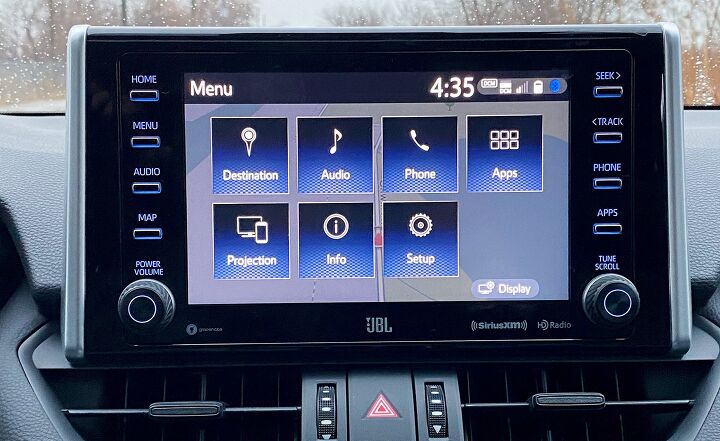





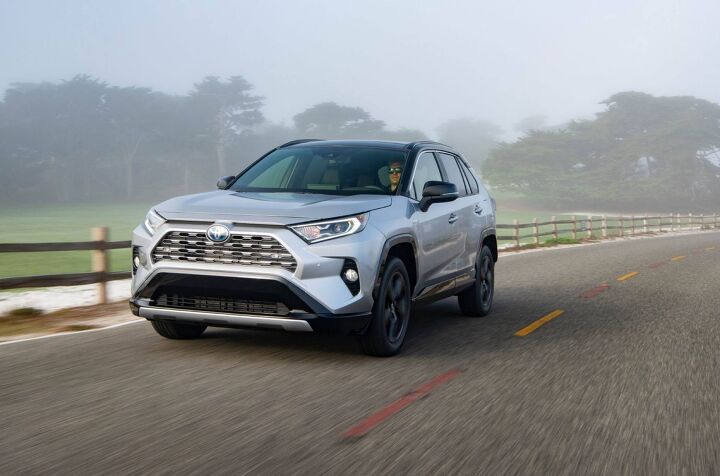

















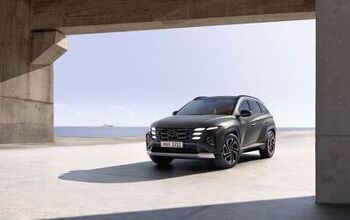
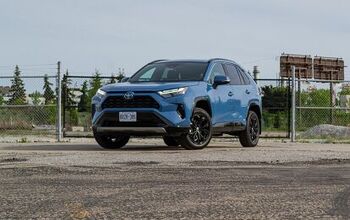

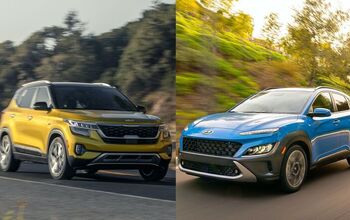

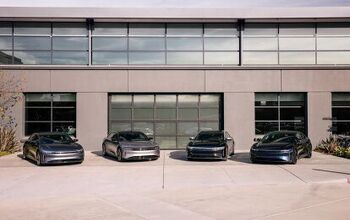
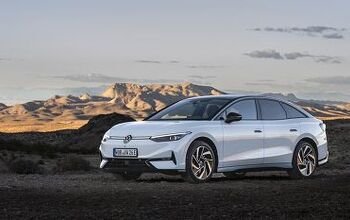



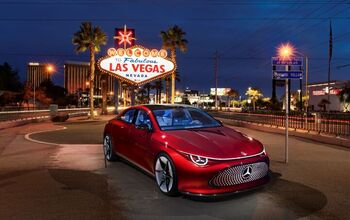
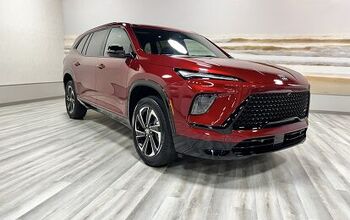



Comments
Join the conversation
looking for the limited AWD, shimmering silver color SUV
Looking for a Tucson, limited hybrid.